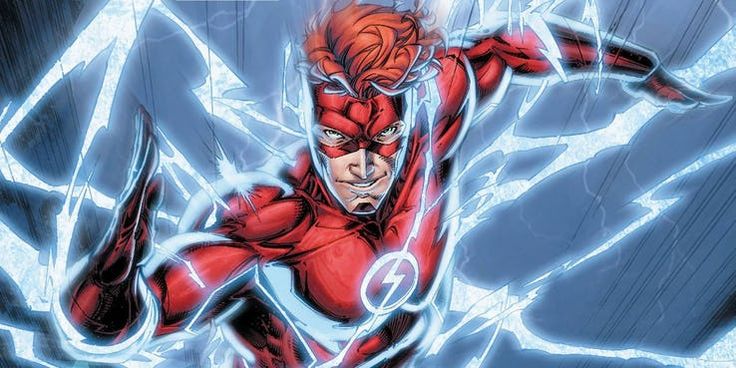The Flash, which first aired on October 7, 2014, on The CW, has become one of the most successful and beloved shows in the Arrowverse, the shared universe of DC Comics-based television series. Focused on Barry Allen, the fastest man alive, the series not only brought the iconic DC superhero to the small screen but also introduced fans to a world filled with complex characters, thrilling action, and intricate storylines. Over the course of nine seasons, The Flash has left an indelible mark on television, blending superhero action with emotional depth and exploring the consequences of time travel, alternate timelines, and moral dilemmas.
The Storyline: From Crime Scene Investigator to Superhero
The central premise of The Flash revolves around Barry Allen, a forensic scientist in Central City who gains super-speed abilities after a freak accident involving a particle accelerator. When the explosion from the accelerator causes a lightning strike to hit Barry, he is granted the power to move at incredible speeds. However, Barry soon learns that his new abilities come with both a tremendous responsibility and a number of dangerous consequences.
As The Flash, Barry faces an array of enemies, many of whom are other speedsters, including his most notable adversary, Eobard Thawne (Reverse-Flash). Throughout the series, Barry is confronted with difficult choices that test his character, especially when it comes to the morality of changing timelines. The theme of time travel is explored extensively in the show, with pivotal story arcs like Flashpoint, where Barry goes back in time to save his mother, leading to catastrophic changes in the present day.
Key Characters and Performances
One of the strengths of The Flash lies in its well-developed characters, each with their own backstories and motivations. Grant Gustin’s portrayal of Barry Allen has been widely praised for its emotional depth and relatability. His performance balances the character’s youthful enthusiasm with the heavy burdens of being a superhero, making Barry one of the most human and likable figures in the superhero genre.
Alongside Barry, the show features an ensemble cast, including Candice Patton as Iris West-Allen, Barry’s love interest and a central figure in his life. Patton’s portrayal of Iris brings emotional complexity to the series, as she supports Barry through both his personal and superhero struggles. Danielle Panabaker’s Caitlin Snow, a brilliant scientist with her own powers, and Carlos Valdes’s Cisco Ramon, a tech genius who also gains abilities, round out Barry’s core team. The chemistry between these characters contributes significantly to the show’s success, as viewers become invested in their growth, relationships, and struggles.
Another standout in the series is Tom Cavanagh, who plays multiple versions of Harrison Wells, a key character in the show’s exploration of alternate realities and time travel. Cavanagh’s performance adds layers to the series, allowing for a dynamic and often unpredictable portrayal of Wells across different timelines.
The Arrowverse and Crossover Events
As part of the larger Arrowverse, The Flash frequently crosses over with other DC shows like Arrow, Supergirl, and Legends of Tomorrow. These crossover events have become fan favorites, particularly the annual Crisis on Earth-X and Crisis on Infinite Earths, where characters from different shows unite to fight common threats. These crossovers allowed The Flash to explore more expansive storylines and integrate characters from across the Arrowverse, enriching the show’s narrative and solidifying its place in DC’s television universe.
Villains and Antagonists
The Flash has one of the most compelling rogues’ galleries in superhero television. The series introduced a variety of villains, from metahumans to time-traveling foes, all with complex motivations. The primary antagonist for much of the series is Eobard Thawne (played by Tom Cavanagh and Matt Letscher), a speedster from the future who seeks to destroy Barry’s life. His obsession with Barry and desire to undo the Flash’s existence leads to some of the most tense and emotional storylines in the show’s history.
Other notable villains include Zoom (Hunter Zolomon), Savitar, and Godspeed, all of whom challenge Barry’s abilities and force him to grow as both a hero and a person. The show’s exploration of villainy often highlights the fine line between hero and villain, as Barry himself grapples with the consequences of his actions, particularly when it comes to his manipulation of time.
The Final Season and Legacy
The Flash concluded its run in 2023 with season 9, bringing an end to Barry Allen’s journey as The Flash on television. Over its nine-season run, the show maintained a loyal fanbase and explored themes of identity, sacrifice, and the consequences of playing with time. The final season tied up many storylines and provided closure to long-running arcs, including the fate of Barry and Iris’s relationship and the impact of their actions on Central City.
The series’ legacy lies in how it balanced superhero spectacle with deep character development and emotional stakes. While it faced criticism in later seasons for some repetitive storylines and inconsistent pacing, The Flash remained one of the most significant superhero TV shows of its time. It helped solidify The CW’s reputation for successful DC adaptations and set the stage for future superhero series.
In conclusion, The Flash will be remembered for its contributions to the Arrowverse, its memorable characters, and its emotional storytelling. As fans bid farewell to Barry Allen, they can look back on a series that successfully captured the essence of the beloved superhero while navigating complex moral dilemmas, time travel, and the ever-changing dynamics of heroism.
